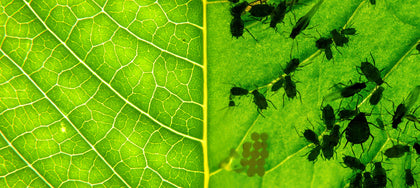This growing resistance has paved the way for biological insecticides—natural solutions that control pests without contributing to resistance. Biologicals are especially appealing in sustainable farming and integrated pest management (IPM) practices, where maintaining ecological balance is critical. By leveraging the power of naturally occurring organisms, such as beneficial fungi and bacteria, biological insecticides offer a potent yet environmentally friendly approach to pest control.
Understanding Pesticide Resistance and Its Impact
Pesticide resistance occurs when pest populations evolve to withstand specific chemical treatments. This resistance often emerges after repeated applications, as the pests that survive the treatment pass on their resistant genes to subsequent generations. The result? An entire population that can tolerate formerly effective pesticides.The impacts of pesticide resistance are far-reaching:
- Reduced Effectiveness of Chemical Controls: As pests become resistant, traditional pesticides require higher doses and more frequent applications, increasing costs and labor.
- Environmental Impact: Increased chemical use can harm beneficial insects, contaminate soil and water sources, and disrupt local ecosystems.
- Economic Pressure on Growers: With more frequent applications needed to combat resistant pests, growers face higher operational costs and risk reduced profitability.

Biological control solutions are an ideal addition to IPM programs, as they can be rotated with other treatments to manage pest populations effectively without overusing any single method. For example, organic-certified products derived from neem trees, such as Azadirachtin, act as insect growth regulators that disrupt pest growth and reproduction, making them effective for resistance management in various crop settings. Another example is the use of Beauveria bassiana, a beneficial fungus that infects and kills soft-bodied insects, which many biological products leverage for long-term pest suppression.
Key Benefits of Biological Solutions in Agriculture
- Reduced Risk of Resistance: Since biologicals target pests differently, they create an effective approach to managing resistant populations. However, it’s essential to rotate these products with other control measures to further minimize resistance risk.
- Environmental Safety: Biological solutions often have minimal impact on
 beneficial insects, pollinators, and surrounding ecosystems, making them safer for overall environmental health.
beneficial insects, pollinators, and surrounding ecosystems, making them safer for overall environmental health. - Sustainable Crop Health: Reduced chemical inputs lead to healthier soil and water sources and a more balanced ecosystem over time.
- Versatile Application: Biological insecticides can be used in conjunction with traditional pesticides, especially in IPM programs, helping to mitigate resistance risks.
Spotlight on Biological Insecticides: Effective and Sustainable Solutions
Let’s explore three prominent biological solutions used in pest control: Azadirachtin , Beauveria bassiana , and other microbial-based treatments.-
Azadirachtin-Based Products
Azadirachtin, derived from neem tree seeds, has gained widespread attention for its natural insect growth-regulating properties. Products based on Azadirachtin disrupt pest molting and reproduction and can deter feeding in adult insects. This unique action profile makes it a versatile tool in IPM strategies, effective against a range of pests, including aphids, mites, and caterpillars. Studies have shown that Azadirachtin is highly effective without contributing to resistance due to its complex mode of action. - Beauveria bassiana: A Biological Game-Changer
Beauveria bassiana is a naturally occurring fungus that infects a variety of pest insects. Once it comes into contact with an insect, the fungus penetrates its body and ultimately leads to death. The pest-specific action of Beauveria bassiana makes it an excellent choice for biological pest control, particularly for crops vulnerable to soft-bodied pests such as whiteflies, aphids, and thrips. Notably, products based on Beauveria bassiana have minimal impact on beneficial insects and are compatible with organic and sustainable agriculture practices. They are also safe for pollinators when used according to label directions, which is essential for maintaining biodiversity in agricultural landscapes. - Microbial-Based Insecticides: Precision Targeting Without Resistance
Microbial insecticides encompass various bacteria, fungi, and viruses that specifically target pest populations. These products are valued in IPM programs for their specificity and low resistance potential. By deploying these solutions alongside traditional insecticides, growers can significantly reduce the chances of pests developing resistance, ensuring a healthier balance of pest and predator species.
BioCeres WP: A Leading Solution in Biological Pest Control
 For those seeking a biological solution that targets multiple pest species, BioCeres WP offers a powerful option. This product contains Beauveria bassiana , which infects and eliminates soft-bodied pests while sparing beneficial insects. BioCeres WP’s compatibility with organic and IPM programs makes it particularly valuable for growers looking to reduce chemical inputs without sacrificing efficacy.
For those seeking a biological solution that targets multiple pest species, BioCeres WP offers a powerful option. This product contains Beauveria bassiana , which infects and eliminates soft-bodied pests while sparing beneficial insects. BioCeres WP’s compatibility with organic and IPM programs makes it particularly valuable for growers looking to reduce chemical inputs without sacrificing efficacy. It serves as a testament to how biologicals can be foundational tools in sustainable agriculture. By leveraging Beauveria bassiana , BioCeres WP can be used in conjunction with other biologicals, like Azadirachtin-based products, creating a robust, multi-pronged approach that targets pests from different angles. This comprehensive strategy not only reduces resistance risk but also aligns with ecological preservation goals.
Implementing Biologicals in IPM Programs: Best Practices
Biological insecticides are most effective when integrated into a pest management plan:- Rotation and Diversity: Rotate biologicals with chemical treatments to prevent resistance. Products like Beauveria bassiana and Azadirachtin are ideal for alternation with synthetic options.
- Monitor Pest Populations: Track pest levels and life cycles to optimize timing of biological applications.
- Maintain Application Frequency: Biologicals may need more frequent applications. Timing and monitoring are key to maximizing effectiveness.
Embracing a Future of Sustainable Pest Control
With increasing pesticide resistance, the demand for sustainable alternatives grows. Biological insecticides offer a solution that controls pests while maintaining ecological balance. Products containing Azadirachtin and Beauveria bassiana are paving the way for a resilient agricultural future where crop health and environmental stewardship go hand in hand.
By adopting biological products and incorporating them into integrated pest management plans, growers can meet today’s pest challenges while preserving tomorrow’s environmental health.







